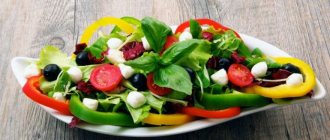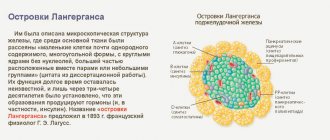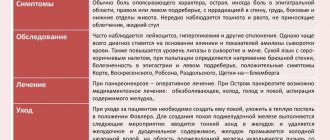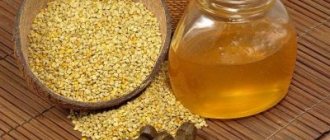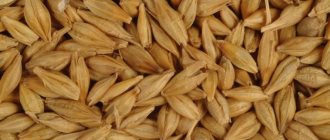Semolina porridge is a familiar product from childhood. Despite this, few people know what it is made from and what beneficial properties it has. Semolina is a cereal made from the core of wheat; in its composition it belongs to carbohydrate products. Semolina porridge for pancreatitis is allowed for consumption, but only if prepared taking into account special recommendations.
Semolina porridge in the patient's diet
Not only pancreatitis is an indication for prescribing semolina, but also other diseases of the gastrointestinal tract (cholecystitis, gastritis and others). And all because the porridge made from it has beneficial properties due to its chemical composition and high nutritional value. Semolina grains are much larger than wheat flour particles, but this does not in any way affect the beneficial properties of the product.
Useful properties of semolina:
- the structure of the finished product has a delicate consistency;
- entering the gastrointestinal tract, porridge envelops the mucous membrane, helps remove toxic substances from the body due to the fact that it is digested in the lower intestines, and, passing through the small intestine, cleanses it;
- the finished product has a high nutritional value, due to which it is prescribed after diseases of the gastrointestinal tract and after operations;
- since the cereal does not contain fiber, the formation of gases (flatulence) is excluded;
- the beneficial substances contained in cereals (as a result of its rapid preparation) are not susceptible to destruction under the influence of heat treatment.
In contrast to the beneficial properties, it makes sense to mention the disadvantages of semolina:
- the product is completely represented by easily digestible carbohydrates, and if you add butter and sugar to the dish, then it will have nothing to do with dietary nutrition;
- Porridge is not recommended for obesity, diabetes, or if there are contraindications to its components;
- Regular consumption of semolina porridge leads to constipation, since it lacks fiber. Therefore, the product must be limited or completely excluded for people suffering from this disease.
Features of eating oatmeal
Oatmeal for pancreatitis is especially useful because it reduces cholesterol levels in the blood. In addition to the properties already described, oatmeal is also rich in vitamins and, thanks to its action, restores the vitamin balance in the body, which promotes recovery.
Just like other cereals, oatmeal should be eaten in moderation. You should not eat it in large portions right away. It is recommended to introduce this porridge into the diet 5-6 days after the onset of an attack of acute pain. It contains a large amount of fiber, so consuming it earlier can put unnecessary stress on the pancreas and slow down its recovery process.
In the first days of eating oatmeal, you should cook it in water, and before cooking, grind it to flour. Adding salt, sugar and butter is also not recommended. It must be remembered that eating unprocessed oat grains for patients with pancreatitis is strictly prohibited. This is a difficult food to digest and will have a negative impact on the recovery process of the pancreas.
Semolina for acute pancreatitis and exacerbation of the disease
Is this product possible or not during the acute period? Immediately after the attack - no. The inflamed gland must “rest” from the functional load so that the source of inflammation does not increase and health does not worsen.
The secreted pancreatic juice can cause harm to the gland itself. At this time, nothing is indicated except hunger, rest and medications.
Porridge and ready-made cereal dishes are among the products that are recommended in diet No. 5 in order to achieve the following purposes:
- normalization of the function of the gastrointestinal tract;
- ensuring chemical and mechanical sparing;
- prevention of fatty degeneration of pancreatic tissue;
- reducing the excitability of the organ, as well as other digestive glands.
Is it possible to eat oatmeal for pancreatitis or not?
Pancreatitis is a disease characterized by an inflammatory process in the pancreas. Like other common diseases of the digestive system, treatment of pancreatitis involves medication therapy in combination with a special diet. Without a therapeutic diet, medications will not have the desired effect.
The diet of a sick person necessarily includes porridge, served as a side dish, for example, with boiled meat or cutlets. A diet for pancreatitis involves gentle nutrition, consumption of foods that do not irritate the mucous membranes of the digestive organs and do not put a strain on the pancreas.
Oatmeal for pancreatitis can be consumed in moderation.
Semolina for chronic pancreatitis and during remission
As symptoms subside, the diet is expanded to include certain foods. Semolina for chronic pancreatitis is recommended for use if it is prepared with skim milk.
You need to add little sugar, and the porridge itself is consumed in limited quantities, especially if you have a history of diabetes.
If you do not have a history of diabetes, you can optionally add a little honey to the porridge instead of sugar, as well as raisins and dried apricots. Dried fruits diversify the taste and enrich the finished dish with additional beneficial substances.
Semolina porridge recipe
A suitable porridge recipe for illness includes the use of the following ingredients:
- semolina;
- water;
- skimmed milk;
- salt, sugar;
- a small piece of butter.
Preparing porridge is simple: you need to mix 150 ml of water and milk (if the milk is skimmed, then you can use only that), pour it into a saucepan and put it on the stove. As soon as the liquid begins to boil, add semolina to it in small portions (1-3 tablespoons), stirring the dish being prepared. Add a little salt and sugar to it. The more grains, the thicker the finished product will be. Cook the porridge for several minutes.
Semolina
Semolina is allowed to be eaten only 5-6 days after the onset of the attack. You can cook it either in water or in highly diluted milk. There is no need to add sugar, salt, butter and other seasonings to the porridge. Please note that to begin with, you are allowed to eat only 2-3 tablespoons of semolina; over time, the portion can be slightly increased.
During the period of remission, semolina can be added to meat and fish dishes, broths, and desserts can be prepared from it. However, even if you feel well, you should not get carried away with semolina; you are allowed to eat it no more than three times a week.
What are the beneficial properties of semolina for patients?
- Semolina itself is very small and tender and therefore it is suitable for those diets that involve eating bland food.
- Semolina is able to envelop the walls of the stomach and intestines, and also remove mucus accumulated on these very walls.
- It contains a large amount of protein, and with regular consumption of semolina, you can achieve rapid recovery of the pancreas.
- There is almost no fiber in semolina, so you won’t have to worry about flatulence, bloating and colic.
- Those who have cooked semolina at least once in their life know that it cooks quite quickly, and this allows the B vitamins to be completely preserved.
Rice porridge can be introduced into your diet on the third day after the onset of the attack.
Rice is one of the most permitted foods. In the first week, you can eat well-mashed rice, boiled in water or well-diluted milk. In this case, absolutely no seasonings are allowed to be added to the rice.
Why is rice good for those with pancreatitis?
- It has a viscous structure, which helps it envelop the stomach, creating a film that will protect it from harmful influences for some time.
- Rice is a very light food, it puts virtually no load on the diseased pancreas and is easily digested.
- Has sorbing properties.
- Rice cereal contains a large amount of complex carbohydrates, so the patient will be provided with a long feeling of satiety.
- Very often, an exacerbation of the disease is accompanied by diarrhea, and rice has strengthening properties, which is why it will be useful to eat it in the very first days after the attack.
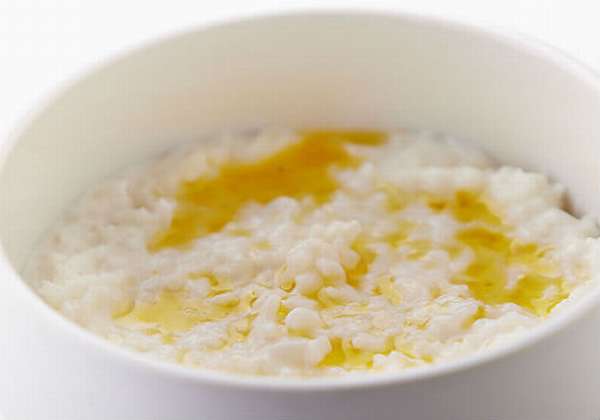
On what basis should you eat rice?
- Rice itself contains very few vitamins and microelements, so a patient will not last long on rice alone. For this reason, rice can be eaten together with stewed vegetables, and when the patient feels better, then add boiled lean meat and the same fish to it.
- There is also brown rice on sale, which is not polished when cooked and undergoes much less processing than white rice. So, this type of rice can only be eaten by healthy people; for those who have an unhealthy pancreas, this dish is not suitable.
- If chronic pancreatitis is accompanied by regular constipation, then you will have to give up rice in large quantities.
- Powdered rice can only be eaten during the period of remission.
- Unfortunately, patients will have to forget about such dishes as pilaf and sushi forever.
Rice is one of the most permitted foods. In the first week, you can eat well-mashed rice, boiled in water or well-diluted milk. In this case, absolutely no seasonings are allowed to be added to the rice.
Manna
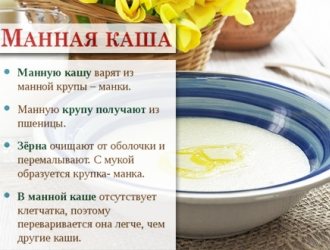
It is well absorbed without affecting the gastrointestinal mucosa. Usually it can be consumed approximately on the fifth day after an exacerbation. Semolina helps restore the pancreas. It contains no fiber, so it does not cause bloating, flatulence and colic. It also contains a lot of vitamins, and it tends to remove mucus and excess fats from the body. When inflammation subsides, you can make desserts from cereals or eat it in its pure form several times a week.
Wheat and barley porridge
Wheat porridge is not recommended for pancreatitis. It can make you feel overly full when you haven't actually eaten much. This is ensured by the gluten in the composition. During an exacerbation and for a week after it, it is better to avoid the product. Porridge is allowed only during the remission stage in moderate quantities.
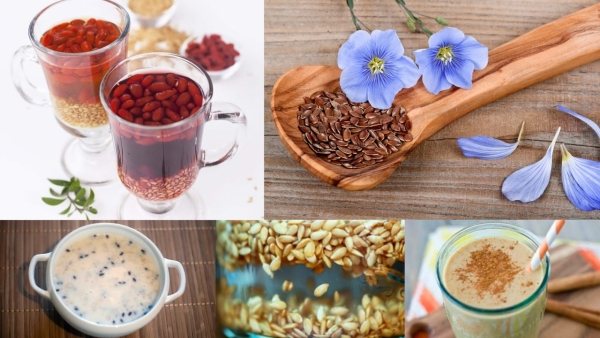
You shouldn’t get carried away with barley, although experts sometimes recommend it at the stage of stable remission. It can cause a feeling of heaviness in the stomach, so when preparing dishes from it, experts advise boiling it for a long time and mashing it into a puree.
We recommend reading: Herbs for the pancreas - useful herbs and treatment
Rice
Rice porridge can be included in the diet within three days after an exacerbation of pancreatitis. In the first week it is allowed only in crushed form. It is better to cook in water with the addition of milk or milk. At this stage, you should not add salt, butter or sugar.
Experts recommend choosing unpolished rice, which envelops the stomach, protecting it from negative external factors. It also has a sorbent effect, is easily digestible, provides long-lasting satiety and helps normalize stool.
Viscous milky rice porridge
The following ingredients are taken:
- ¾ cup rice cereal;
- a glass of milk;
- glass of water.
Rice needs to be washed with warm and then hot water until it becomes clear. Boil water and add washed rice to it. Cook until half cooked. Then boil the milk, pour it hot into the porridge, stir and cook until the rice becomes soft. The finished porridge is passed through a sieve.
About 10 days after the exacerbation, you can add a small amount of sugar, salt and butter to the porridge.
A similar recipe can be used to cook porridge in a slow cooker. You need to pour the ingredients into it and set the “Milk porridge” mode.
Pearl barley has a softening effect on the digestive organs, improves the effectiveness and speed of therapy. It has antispasmodic and anti-inflammatory properties, protects the mucous membranes from the aggressive effects of certain factors.
Semolina during the period of attenuation of pancreatitis
During the period of decline of the disease, other dishes made from semolina are added to the patient’s diet: sweet porridge, soups seasoned with semolina products, manna. Cottage cheese casseroles with the addition of semolina are welcome. Baking and adding to minced meat and fish are allowed. Semolina is allowed to be eaten once every two days, replacing it with healthier cereals in the menu.
Oatmeal
Oatmeal is considered a mucous porridge. Famous for its enveloping qualities, it is well accepted by the body, quickly absorbed in the gastrointestinal tract, saturating the body with proteins and fatty acids. Porridge neutralizes the excess of enzyme substances that occur during pancreatitis, has a stimulating effect on the digestive system, and is indispensable for difficulties with peristalsis.

